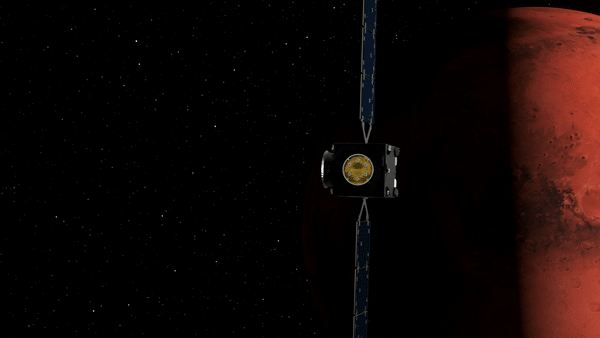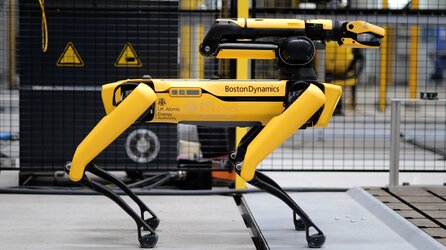ESA industry day celebrates UK innovation
British companies are using satellite-enabled connectivity to accelerate the digital transformation of the European economy – as highlighted at an industry showcase held in the UK.
The event – which focused on the ongoing and successful collaboration between ESA and the UK – took place at the agency’s European Centre for Space Applications and Telecommunications (ECSAT) in Oxfordshire.
It emphasised the crucial role ECSAT has in promoting UK space achievements in Europe.

The event was attended by Josef Aschbacher, ESA’s Director General, as well as many other key members of the British and European space industries.
Based at Harwell Campus, ECSAT hosts several centres for innovation, including ESA’s 5G/6G Hub.
From this facility, ESA is collaborating with industry to explore the potential of converged 5G terrestrial and satellite networks.
Several companies that are using next-generation connectivity to power new applications showcased their technologies at the event.

Supported by ESA, Darwin Innovation Group – which develops communications technology for autonomous vehicles – recently launched a driverless shuttle service that transports passengers around Harwell Campus.
Cardiff-based Excelerate Technology, also present at the event, is using space-enabled 5G to develop technologies that will help ambulance crews improve patient care while on the move.
Communications company OneWeb exhibited a specially designed connected vehicle, demonstrating how world-wide internet coverage delivered by low Earth orbit satellite constellations is set to revolutionise transport.
The industry day also highlighted the new additions being made to ECSAT.
In 2021, ESA began building a new conference centre that will showcase the global impact of the expanding UK space industry.

During the event, a topping out ceremony was held to mark the progress made on the construction project so far. The centre is due to open in 2023.
In addition, an extension of the 5G/6G Hub – called the Moon and Mars Room -- was launched as part of the industry day.
Using virtual and augmented reality, the room showcases how next-generation connectivity could facilitate the new era of commercial exploration to the Moon and beyond.
ECSAT also hosts ESA’s Climate Office, which is the focal point for the agency’s climate-related activities. In March, ESA expanded these efforts by opening a new climate modelling project office at ECSAT.
This office will work with modellers around the world to improve long-term environmental projections, helping the international community act to combat the climate crisis.

Josef Aschbacher, ESA’s Director General, said: “The impressive number and diversity of the UK projects showcased at ECSAT today reflect the UK space industry’s excellent aptitude for commercial innovation. ESA looks forward to further strengthening our already excellent cooperation with the UK for decades to come, as we work to expand Europe’s ambitions and successes in space.”
Elodie Viau, ESA’s Director of Telecommunications and Integrated Applications and Head of ECSAT, said: “From ECSAT, ESA is working with its partners at Harwell and across the UK to realise the enormous potential of space. This strong and continued cooperation is promoting European leadership in space and helping to tackle environmental and societal challenges that impact us all.”

Harshbir Sangha, Director of Growth at the UK Space Agency, said: “The European Centre for Space Applications and Telecommunications, located on the thriving Harwell Space Campus, enables British businesses to develop their products and services. It is great to see so many UK companies using the centre to develop new innovations in connectivity, while the ESA Climate Office is increasing the use of valuable satellite data to monitor our environment and inform climate action.
“The centre is also a good example of how the UK’s membership of ESA helps catalyse investment into the UK space sector and enables us to achieve the ambitions set out in our National Space Strategy. We look forward to continuing our work together so that more companies can develop new telecommunication innovations.”















 Germany
Germany
 Austria
Austria
 Belgium
Belgium
 Denmark
Denmark
 Spain
Spain
 Estonia
Estonia
 Finland
Finland
 France
France
 Greece
Greece
 Hungary
Hungary
 Ireland
Ireland
 Italy
Italy
 Luxembourg
Luxembourg
 Norway
Norway
 The Netherlands
The Netherlands
 Poland
Poland
 Portugal
Portugal
 Czechia
Czechia
 Romania
Romania
 United Kingdom
United Kingdom
 Slovenia
Slovenia
 Sweden
Sweden
 Switzerland
Switzerland






























